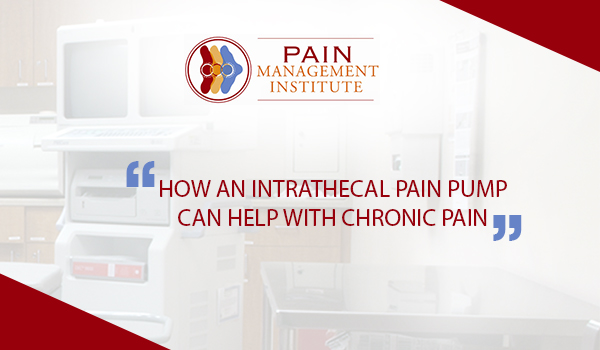The FDA has recently approved an Intrathecal pain pump delivery method of medications that may eliminate or reduce the need for structured Opoids
The basics about the Intrathecal Drug Delivery System
The Intrathecal pain pump is an implantable pump that provides targeted delivery for chronic pain and severe spasm. The Intrathecal pain pump delivers medications straight to the fluid surrounding the spinal cord, which Dr. Zaki Anwer, MD, says, provides relief at minimal dosage as compared to the oral medications in sufferers with chronic pain and severe spasm
The pain pump is designed to ease therapy management by providing physicians with perceptible aid and intuitive workflows
The most suitable candidates for the Intrathecal pain pump are the chronic pain sufferers, unmanageable pain and severe muscle contraction, other treatments have failed to provide relief and have endured unbearable side effects with medications
Reducing or Eliminating Systemic Opioid Use
Dr. Zaki Anwer, MD, at The Pain Management Institute, Chicago, Frankfort says “ With continuous Opoid crises the ability to minimize the use of structured Opoid and efficiently manage my patients with pain is more important than ever.”
He adds “The pain pump aids in simplifying the therapy management, enabling me to focus on providing my patients with pain relief through the Intrathecal delivery of medications so that structured Opioids are reduced or eliminated entirely”
How it’s performed
An Intrathecal pump is surgically implanted under the skin by an expert physician. The pump is implanted in the abdominal area, is linked with the catheter, which digs under the skin to a specific area where the medication is required
The therapy has been proven to be safe and effective when used as directed
- Does not involve permanent changes to the spinal cord or nerves
- Can be adjusted to dispense medication according to your activity level and pain patterns
- Lets you try the therapy for a short period of time before committing to long-term therapy
- Is reversible the therapy can be turned off, or if desired, it can be surgically removed
Conclusion
In addition to the usual risk of surgery and anesthesia at the time of introducing the pain pump and catheter tubes a variety of side effect may occur directly associated to the pump, the catheter mechanism, the drugs and the refilling process at the time of surgery or following the surgery when the pain pump remains in the position, patients are notified of the infection, failure to control pain development of spinal headache, spinal cord or nerve injury, drug overdose, or adverse reaction to the drugs and equipment malfunction can all occur at, or around, the time of insertion.

